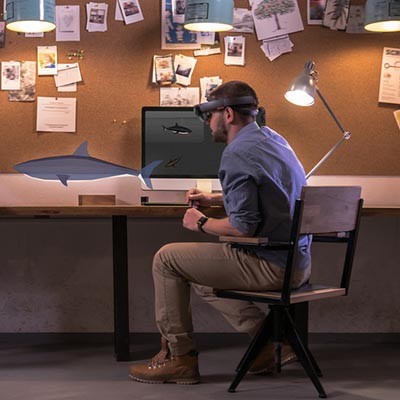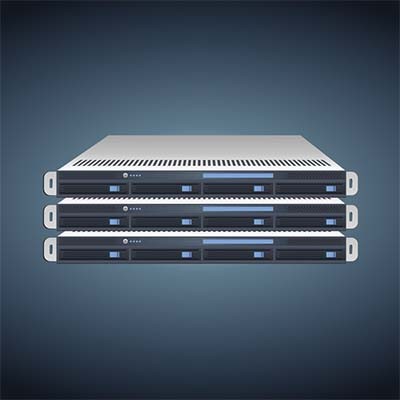Ferrum Technology Services Blog
Communication plays a critical role in the way you develop relationships and clients. To optimize communication with your clients and customers, proper use of technology is essential, but it also makes for a much nicer experience from an operational standpoint. How can your business utilize this powerful communications technology?
When a business uses its technology the right way, it typically has positive effects on the business. That’s not to say that technology is a major priority for EVERY business. There are some business owners that don’t prioritize having the newest, shiniest technology on the market; and, that’s fine, if the business functions efficiently.
There are moments when a technology solution presents itself and is simply too valuable to pass up, but they are generally few and far between. One particular solution you can use to great effect is augmented reality, and we believe that with the right implementation and support, you can overcome challenges that the future might hold.
The hardware that makes up your business’ IT infrastructure can be difficult to manage--particularly if that’s not where your specialty lies. While the first step to having a successful IT strategy is to have the proper hardware, acquiring it can be rather challenging at times, especially if your business doesn’t have an in-house IT department. Sometimes an outsourced approach is the best way to gain the best tech for your goals.
Sometimes it might feel like your technology never works as you want it to. You might try to open up a software application only to find an error message that keeps you from being productive. The error doesn’t go away no matter how many times you reload the application. How can you eliminate these issues that threaten to derail your productivity throughout the workday?
While you may not consider it at first, your mobile device has a sizeable amount of personally identifiable data on it - far more than should be left on an unsecured phone at any time. Fortunately, Google has added a considerable layer of protections to Android to assist users with their security. All a user has to do is know how to use them to their fullest potential.
Sometimes an issue on your computer causes it to be so far gone that drastic action is needed to get it back in gear. This is where the bare metal restore comes in, and it’s something that you only want to do in the event that you encounter a problem that is just too much to bear. We’ll walk you through what this is, what it involves, and why you might have to do it in the future.
Voice over Internet Protocol, or VoIP, has been widely accepted by the business community as an excellent communication tool. This is due to both the cost savings that VoIP offers, as well as the many, many features that are inherently bundled into the solutions available. There may be more of these features than you may realize. Here, we’ll review some of these features, and disprove some misconceptions along the way.
Here’s an interesting fact: any business that makes money can be successful. It doesn’t matter if you catch and sell fish, offer financial advice, or cut people’s grass, if you make more than you spend, your business will likely stay open as long as demand for your product or service continues. For most businesses, investing in technology can bring with it greater profitability.
It’s no secret that technology is a big part of today’s business, but how much money should your organization really expect to spend on your IT? Of course you need to stay competitive, but can you justify dropping huge chunks of capital on solutions that may or may not come with a visible ROI, or that’s total cost of ownership (TCO) is going to affect your ability to spend elsewhere? Today, we’ll talk about what technology your organization definitely needs, and go into the corresponding cost of that technology.
Simulations are a common thing in many science fiction movies. Perhaps it’s an image on a screen that dictates what could happen as the result of a particular action. Maybe it’s a simulation of a certain event. Either way, the fact remains that something like this--previously relegated only to the realm of sci-fi--has now been brought to the technology industry in the form of a digital twin.
It takes a lot of work and determination to make a successful small business. There are countless parts that need to be managed and maintained--so many that it can be difficult to assign a priority at times. There are certain requirements that your organization must achieve in order to remain successful, but it takes a little more than just business savvy to keep your organization ahead of the game. Let’s take a look at some of the ways your business can make itself stand out and achieve success.
Packing for trips can be frustrating because there’s always the chance that you’ll pack either too much or too little. This is especially true if you have multiple devices that you might be tempted to bring with you. It’s important to remember that you don’t always have to bring each and every device you own every time that you leave the office or go on a trip. We’ll help you make sure that you don’t overpack technology whenever you go on a trip.
It can be easy to dismiss the simple Chromebook as a limited solution, a one-trick pony of technology. However, while this may have once been true of the devices, more recent models are capable of much more than their predecessors. We’ll address a few misconceptions people have about, and against, Chromebooks.
Small business owners need to find creative ways to build a strong, productive operation. The best way to create the kind of productivity required to successfully grow a business is to ensure that everything works in concert. Today, we will look at a four technologies that can go a long way toward helping any small business grow their organizational productivity.
Technology has become so ingrained in society and the workplace that it can be difficult, borderline impossible, to consider a life without it. Hours on end are spent in front of computer screens during the workday, but even after hours in the comfort of your own home, you might notice that you have a hard time putting down your devices.
Science fiction is filled with incredible technology, especially in terms of how the characters communicate. This is especially true in the epic space opera Star Wars. Fortunately for viewers like you and me, some of the communication devices and technologies used a long time ago, in a galaxy far, far away, may not be so far off.
Have you ever heard of the term “bias?” It has a negative connotation to it, but it’s not necessarily a bad thing. A bias can predispose you to a skewed consideration or thought when met with what is known to be a seemingly neutral stimuli. In some cases, they can cause more harm than good, which is why it’s a good thing to take another look at how you approach certain situations. Researchers have discovered several trends about why we hold certain biases, as well as how we can overcome them.
Over time, we’ve seen technology be developed into smaller and smaller sizes. One of the most notable examples of this is the computer. Computers used to be so large that they would take up the whole room, but nowadays, thanks to the developments in technology manufacturing, they take up a fraction of the space that they did not so long ago. What’s even more amazing is that this development has simultaneously increased performance while making technology take up a considerably smaller amount of space.
Virtualization is a topic that a lot of people might hear about frequently, but not necessarily understand. It has a lot of details to keep in mind, but the concepts can be remembered easier by simplifying these details. We’ll take a closer look at some of the finer details of virtualization and what it means for your business’ infrastructure.




















